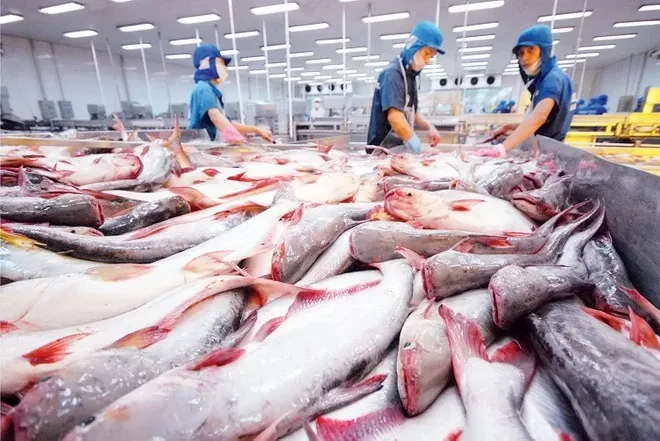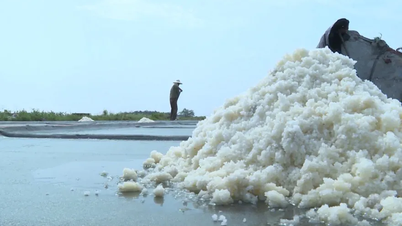With a growth rate of 18%, the Middle East is in the Top 2 markets for importing Vietnamese seafood with the strongest growth.
Association of Processing and Seafood export Vietnam (VASEP) said that in 2024, the Middle East region has emerged as a potential market for Vietnam's seafood export industry, with a growth rate of 18%, reaching a revenue of 334 million USD in the first 11 months of the year, accounting for nearly 4% of the total seafood export value of the country.
It is expected that by the end of 2024, Vietnam's seafood exports to this region will reach more than 360 million USD, ranking in the Top 2 seafood import markets with the strongest growth, after China.

Among the seafood products exported to In the Middle East, tuna and pangasius are the two products with the largest proportions, accounting for 31% and 40% of export turnover to this region, respectively. Tuna recorded a growth of 44%, reaching nearly 105 million USD in 11 months, with canned and bagged tuna exported to this region increasing more than 1.5 times compared to the same period last year.
Canned tuna products, especially in oil or brine, are popular among Middle Eastern consumers due to their convenience and long shelf life. As a result, canned and pouched products account for nearly 70% of Vietnam’s tuna exports to the Middle East.
Besides tuna, pangasius is also an important export product of Vietnam to the Middle East, with a growth rate of 13%, reaching over 134 million USD. Pangasius fillets, cuts and whole frozen fish continue to dominate thanks to their convenience and ease of processing, meeting the consumption needs of consumers in this region.
The Middle East, with strong economies such as Israel, Saudi Arabia, UAE and Qatar, is emerging as one of the most potential seafood export markets. These countries not only have high demand for seafood but also have strict standards such as requiring products to be Halal certification, this creates opportunities for Vietnamese seafood exporters.
Israel is the largest seafood importer in the region, accounting for nearly 30% of Vietnam's seafood exports to the Middle East, mainly canned tuna. The market's growth rate reached 35% in the first 11 months of 2024. Other countries such as the UAE, Saudi Arabia, Qatar and Kuwait also recorded positive growth in seafood imports from Vietnam. The UAE, for example, saw a growth rate of 28%, while Egypt and Iraq also continued to increase demand for pangasius products.
An important factor to consider when exporting seafood to the Middle East is Halal standards. Since the majority of Middle Eastern countries are Muslim, seafood products must be Halal certified to ensure religious legality. This requires Vietnamese exporting enterprises to strictly comply with seafood processing, slaughtering and preservation procedures.
In addition, political challenges and regional conflicts may also impact the supply chain and seafood consumption demand in the Middle East. However, in the context of the Middle East's strong economic transformation, especially the reduction of dependence on oil, countries such as Israel, UAE, Saudi Arabia and Qatar still maintain high demand for seafood, creating great opportunities for the Vietnamese seafood industry.
Source






![[Photo] Buddha's Birthday 2025: Honoring the message of love, wisdom, and tolerance](https://vphoto.vietnam.vn/thumb/1200x675/vietnam/resource/IMAGE/2025/5/12/8cd2a70beb264374b41fc5d36add6c3d)























![[Photo] General Secretary To Lam arrives in Minsk, begins state visit to Belarus](https://vphoto.vietnam.vn/thumb/1200x675/vietnam/resource/IMAGE/2025/5/11/76602f587468437f8b5b7104495f444d)
![[Photo] General Secretary To Lam meets and expresses gratitude to Vietnam's Belarusian friends](https://vphoto.vietnam.vn/thumb/1200x675/vietnam/resource/IMAGE/2025/5/11/c515ee2054c54a87aa8a7cb520f2fa6e)































































Comment (0)